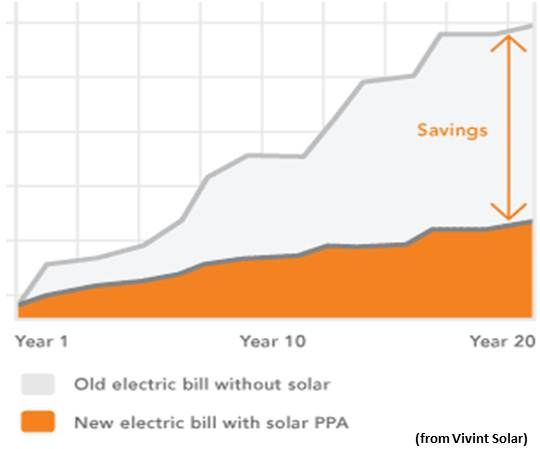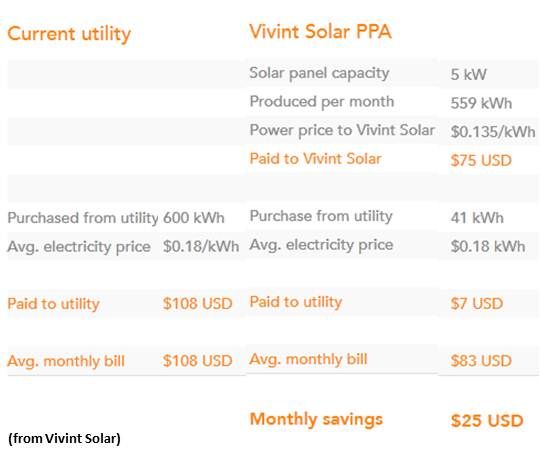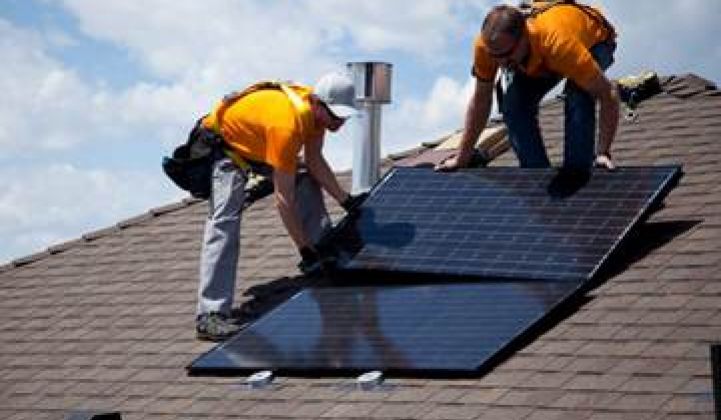The basic idea behind CPF, explained CEO Nat Kreamer, is “to connect the capital market with the solar market.”
Backed by a group of the biggest names in greentech venture capital, including Kleiner Perkins and Google, CPF is a business-to-business service in the form of a software tool that allows solar installers to make financing available to system buyers.
“We started selling financing for solar systems in April 2011,” Kreamer said, "and by August 2011, we were financing more than a million dollars a day of residential power purchase agreements and leases.”
By adding Vivint Solar as a partner, CPF took another step forward. “It shows how this market is advancing very quickly that you’re having players like Vivint come into it,” Kreamer said. “This is a trend of companies that have been very successful in other markets that are bringing that success to the solar market.”

Vivint began as APX Alarm Security Solutions Inc. in 1999 and expanded into home energy management automation, and then, six months ago, into solar installations.
“Vivint has built a tremendous base of something like 600,000 customers,” Kreamer said. CPF’s part of the deal, he added, "is to provide them with a variety of finance products that they can use to sell more solar.”
In the short time that Vivint has been in the solar installation business, it has won $75 million in financing from U.S. Bancorp and made itself, Kreamer said, “one of the largest U.S. providers of solar.”
In Vivint’s first six months, “our run rate is ramping toward 3,000 to 5,000 installations per year,” said Vivint Solar President Tanguy Serra. Based on its current annual 150,000 home system installations, Serra said, Vivint’s goal is 150,000 yearly solar installations. “But that level of financing for solar doesn’t yet exist,” he explained. “That’s why we’re partnering with CPF.”
“To them, 150,000 customers doesn’t sound like a lot,” Kreamer said. “To the rest of the solar industry, it does. But it shouldn’t. That’s what Clean Power Finance is all about.”
Because of the specific federal, state and local incentives that apply to solar financing, the CPF backing will not be used in Vivint’s other businesses. Although such a convergence will likely come eventually, Kreamer said, “You can’t blend the two products right now.”
But in building the kind of customer base Vivint has, Kreamer said, “you learn something about how to do high-quality installations fast. Vivint has taken all of that knowledge, those same systems and technology, and applied it to solar.”
Vivint Solar uses Enphase Energy microinverters and Zep Solar mounting systems, but it is not rapid construction at which Vivint excels. “One of the holy grails when you think about consumers,” said Kreamer “is instant gratification. They figured out that instant gratification is getting to that install as quickly as possible.”
Because CPF’s software tool was built to be flexible, Kreamer said, Vivint will be able to use the CPF white label software for the solar part of its business while maintaining its own IT systems for security and energy management.
Serra echoed Kreamer. “We have invested $40 million in the last 10 years in IT systems,” he said. “The relationship is around integrating our work flow into their financing process.”

Estimating an install at roughly $35,000, Kreamer said, the lowest projected Vivint volume of 3,000 installs per year would require $105 million per year. That would be in addition to the $1 million per day, or $300 million per year, of its funders’ money CPF is already putting into solar.
“We have enough capital to meet our customers’ present demand and their future demand for some time,” Kreamer said. Investors “want to put their money to work and this is a great asset class so we have a lot of capital interested in working with us,” he explained. “People who own homes pay their electricity bills,” Kreamer said, which means “there is low likelihood of default, and investors like that.” Default rates, he said, are lower than default rates on AAA bonds.
Rooftop solar, Kreamer said, is a low-risk, high-reward investment in what is essentially a long-term asset. In addition, with the federal Investment Tax Credit (ITC) available through 2016, as much as 45 percent of an investor’s capital outlay comes back as a tax benefit in the first year of the loan. And the overall return on investment in residential solar is “anywhere from the high single digits to the mid-teens.”
CPF, Kreamer said, has ample capital, and adding a customer like Vivint means there is “deal flow” for the capital. Then, alluding to “good news coming” that he could not yet talk about that will expand CPF’s resources, Kreamer simply said, “we’re not throttling back on our deal flow,” adding that Vivint is ”ramping its business at the same time we’re ramping our capital.”
“We’re seeing hundreds of millions and billions of dollars come at this sector,” Kreaemer said, “and a partnership like this one just makes it more attractive.”



